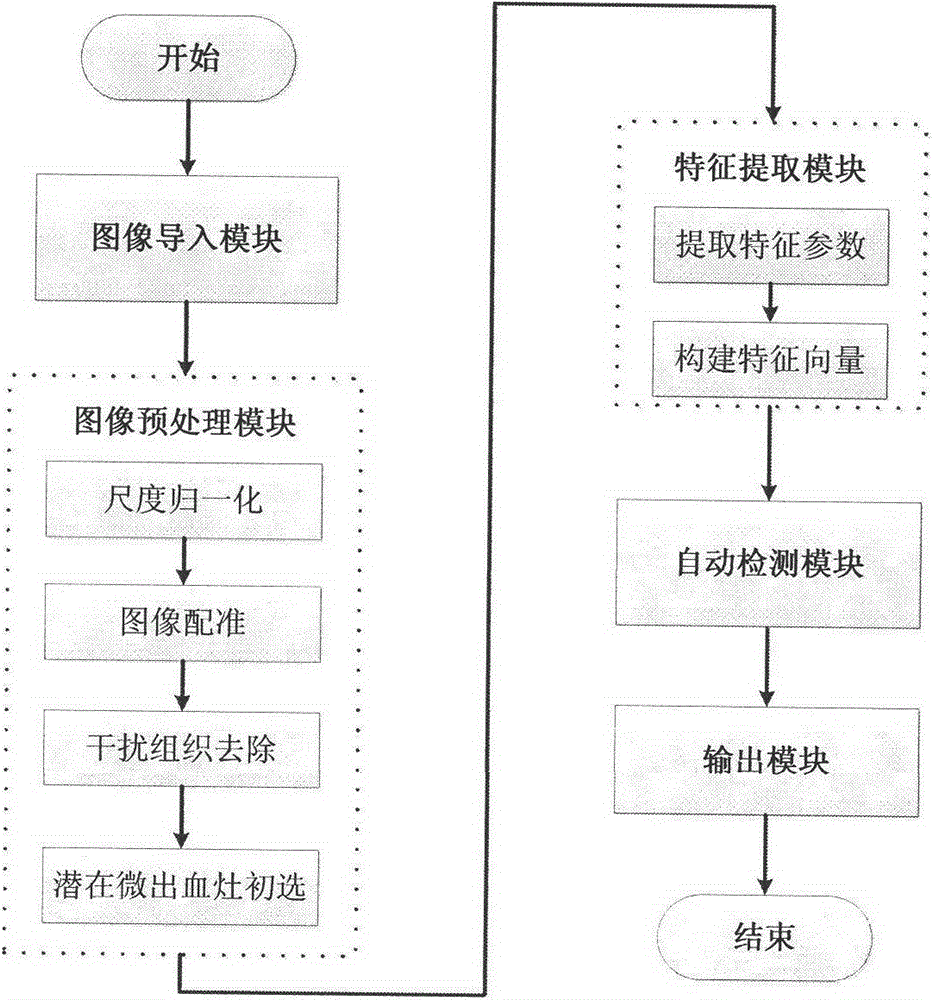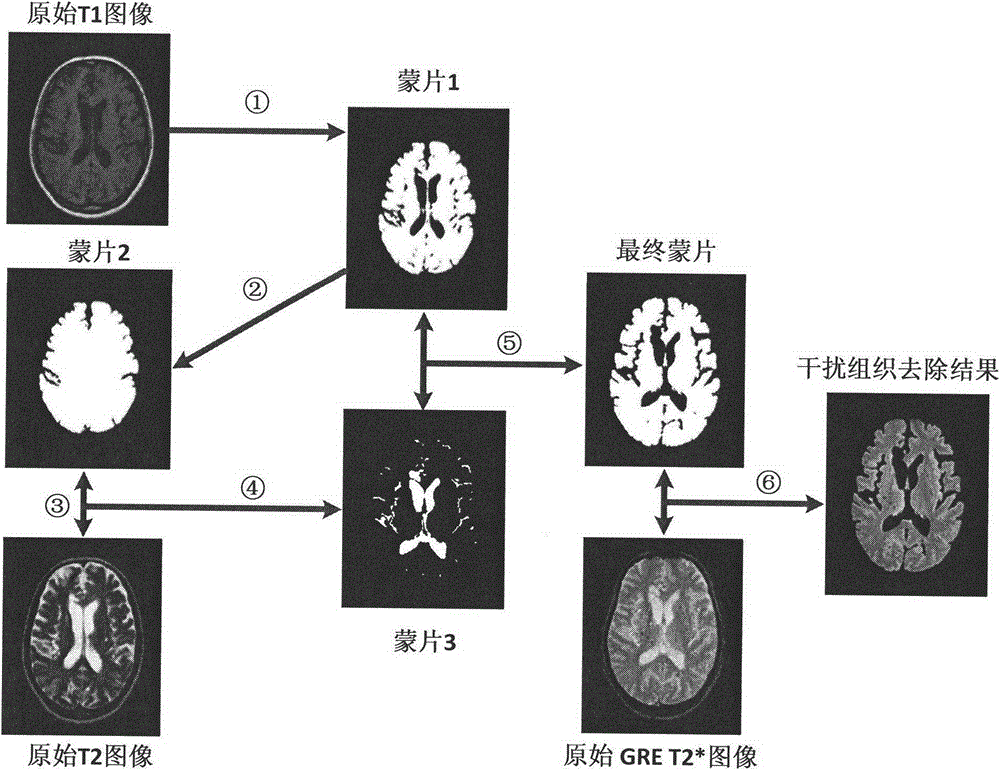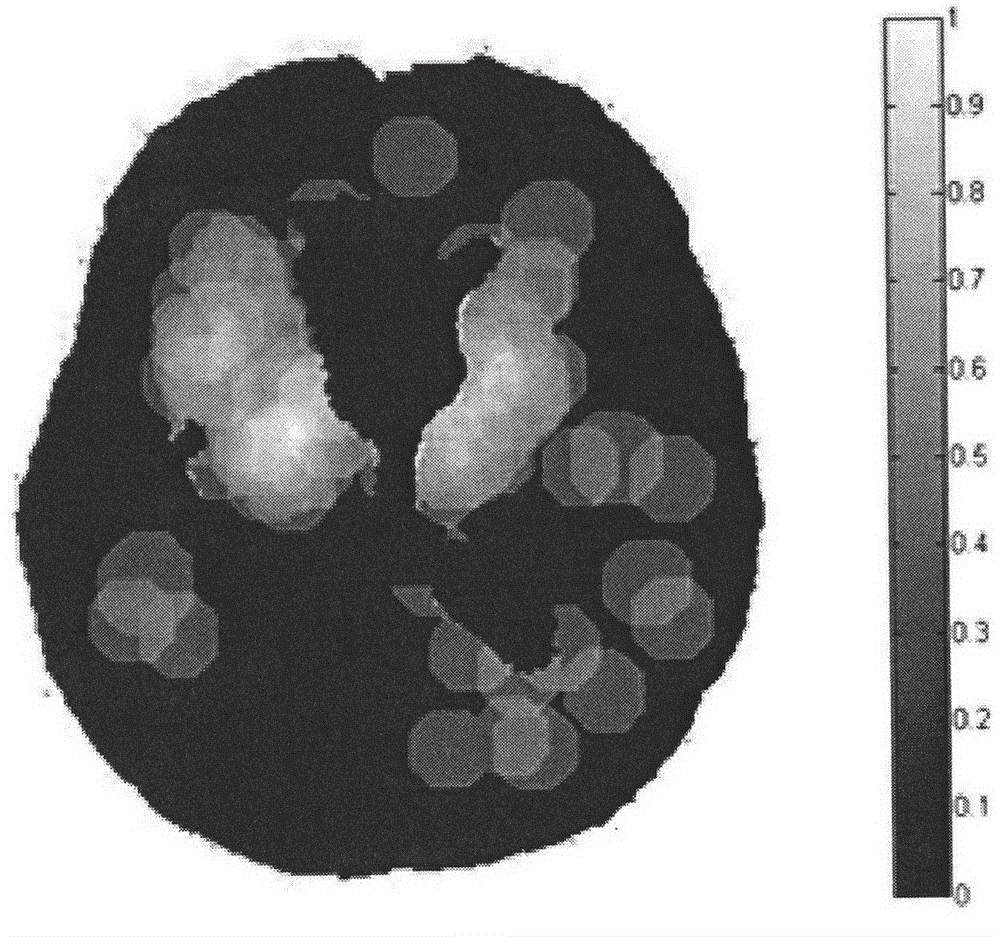Magnetic resonance image based cerebral micro-bleeding computer auxiliary detection system
A magnetic resonance image, computer-aided technology, applied in the directions of diagnostic recording/measurement, medical science, diagnosis, etc., can solve the problem of not considering the prior distribution probability density position information of cerebral microbleeds, and the multi-dimensional image features of cerebral microbleeds need to be further explored. , The complementary relationship between different sequences of image information is not fully considered, so as to shorten the time spent, the detection results are credible, and the detection results are more effective.
- Summary
- Abstract
- Description
- Claims
- Application Information
AI Technical Summary
Problems solved by technology
Method used
Image
Examples
Embodiment Construction
[0042] The present invention will be described in detail below in conjunction with the accompanying drawings and embodiments. The present invention comprises five main modules altogether, as figure 1 No, the specific introduction is as follows:
[0043] 1. Image import module: Import T1, T2 and GRE T2* brain magnetic resonance images from the same patient into the computer-aided detection system for cerebral microbleeds.
[0044] 2. Image preprocessing module:
[0045] 1) Scale the image uniformly to a size of 512×512 pixels;
[0046] 2) Image position registration;
[0047] 3) if figure 2 As shown, with the help of T1 and T2 images, the regions corresponding to the skull, ventricle, cerebrospinal fluid, and meninges that are unlikely to have cerebral microhemorrhages in the GRE T2* image were removed, including the following details:
[0048] ①Use the global threshold segmentation algorithm to remove the skull and obvious cerebrospinal fluid areas in the original T1 ima...
PUM
 Login to View More
Login to View More Abstract
Description
Claims
Application Information
 Login to View More
Login to View More - R&D
- Intellectual Property
- Life Sciences
- Materials
- Tech Scout
- Unparalleled Data Quality
- Higher Quality Content
- 60% Fewer Hallucinations
Browse by: Latest US Patents, China's latest patents, Technical Efficacy Thesaurus, Application Domain, Technology Topic, Popular Technical Reports.
© 2025 PatSnap. All rights reserved.Legal|Privacy policy|Modern Slavery Act Transparency Statement|Sitemap|About US| Contact US: help@patsnap.com



